First Presbyterian Church – Bath, NY
by Chris Clemens
A couple of years ago I attended a lecture that accompanied an exhibit of rare Tiffany stained glass windows at the Memorial Art Gallery in Rochester. Though I had previously seen a few windows on my explorations created by Louis Comfort Tiffany, the lecture was an inspiration to continue learning more about one of the most celebrated artists to hail from the U.S.
Born on February 18, 1848 in New York City, Tiffany would begin his career as a painter and then as an interior decorator. His reputation for interior design earned him the esteemed honor of being the only person that Chester Alan Arthur would allow to decorate the White House before he took office as the 21st President in 1881. Soon thereafter, Tiffany would begin meddling in stained glass art and quickly honed this craft and secured his name in the history books. Indeed, even today his name is often erroneously made synonymous with just stained glass art in general. Though Tiffany became famous for his colored glass, he continued to do a bit of interior design as well.
There are only a few spiritual sanctuaries around the country that he designed corner to corner and Upstate happens to be home to two of them!
I arrived at the church and met up with Helen Brink. In addition to being the President of the Steuben County Historical Society, organizing an annual countywide cemetery tour and knowing just about everything there is to know in the county, she also is an active member at First Presbyterian and leads weekly tours on Wednesdays. I arrived just as the service was ending and as people were filing out of the sanctuary back to the fellowship hall for coffee hour. I’d be hard pressed to try and remember even just one person that wasn’t smiling as they walked passed and nearly every one said at least a hello. It’s always a great feeling to be welcomed places, but even greater is the insight that everyone seemed to really love being there. With each person that shook my hand and said hello or asked about why I was visiting, it seemed to solidify that the congregation was a happy and close-knit community. Ironically, Helen grew up in Rochester and the current interim Pastor Janis currently lives in Rochester and commutes to lead the church–so the connection we each had to one another with the ‘the big city’ seemed to somehow add to the feeling of feeling right at home.
The Town of Bath was founded in 1793 by Briton Pulteney and like so many from that era, he chose a name that reminded him of his previous home, which had been in Bath, England. Steuben County was then founded in 1796 and even today Bath remains the county seat and “Mother Town” of Steuben. Not long after establishing itself, Bath would of course need a house of worship. In 1808 a group officially gathered and called themselves the “Church of Christ in Bath, Presbyterian Congregation.” While they count themselves as the first church to exist in Bath, the group had no official meeting place until 1825. At that time the group constructed one of the wooden, white, simple neo-Gothic style churches often seen around New England which claimed ownership to the tallest steeple in the county and stood 100 ft tall. A common problem facing New York churches in the 1800’s forced the group to build a larger church to house their expanding congregation. It was on February 22, 1877 that the present church was finally dedicated and had been built in the exact same location as their previous, which was torn down to make way for the new.
Two brothers from the area, Ira and John Davenport, had found themselves in a wealthy position after being born to a father who was a bit of a financial mogul. While they may have had a headstart with their wealth, they also were smart businessmen and invested wisely. Each were largely involved in the First Presbyterian Church and greatly contributed to the funding of building the new edifice. With the financial support of the Davenport brothers, the group hired an architect who had been constructing a noteworthy reputation for himself. Jacob Wrey Mould had already built Unitarian Church of All Souls in New York City and though the building doesn’t exist today, it continues to remain famous for its uncommon color scheme and design. His influence was drawn from Moorish design and the concept of using a lot of contrasting colors has allowed his work to stand out in American architectural history. Mould is also known for assisting with work on Buckingham Palace, Central Park, the Metropolitan Museum of Modern Art and the American Museum of Natural History, among others. While Mould built a name for himself as an architect and left behind an impressive portfolio, apparently he also was known for being a bit difficult in the personality department and wasn’t too much fun to work with. Soon after designing the First Presbyterian Church of Bath, he left the United States for Lima, Peru where he spent the remainder of his life. One of the unique things about First Presbyterian is that it is the only existing church that Mould designed!
The church is constructed in a style known as Venetian Gothic, which is a distinction reserved for architecture that combines Moorish influence with Byzantine and Gothic arches and the outside is a handsome looking sandstone that was quarried locally. While Mould’s polychromatic instincts are noticeable if you’re looking for them (i.e. the roof tiles), to the standard eye it may not seem as wild and progressive as they were in the late 1800’s. The interior of the church isn’t the original design but that’s precisely how it became even more unique. A memorial plaque on one wall of the sanctuary tells how in 1895 John Davenport died, and his brother Ira hired Louis Comfort Tiffany to redesign the entire sanctuary corner to corner in his late brother’s tribute. It was indeed a rare and pricey endeavor.
Tiffany came in to the sanctuary and entirely transformed the look of the space. He replaced the windows flanking the nave with his signature stained glass, painted the walls a shade of salmon and bordered them with a decorative painted mosaic. He designed the altar rail from wood and incorporated subtle religious symbology throughout. Niches that line the wall directly behind the altar appear to be mosaic, but upon close inspection reveal that they too are paintings. Helen explained to me that the unending bilinear lines within the mosaics speak to the same meaning given to much of the other design work in the church: that there is an Eternity awaiting those who seek sanctuary here. One of my favorite parts of the same wall rests just above those niches and is a number of metal panels that were hammered and then painted to look like jewels.
Tiffany first used the words “Fabrile Glass” to describe his work because the origins of the definition of ‘fabrile’ pertain to handmade workmanship. He later decided that he didn’t like the sound of the word and simply switched a letter, forever naming his signature style “Favrile Glass”. Visually balanced just above the jeweled panels is a circular rose window with a cross in the center surrounded by an exquisite example of some of Tiffany’s trademark work. If you’re looking that high, some of the other glasswork that he brought in can’t possibly be missed. Though in 1877 the town of Bath didn’t have electricity, Tiffany placed a number of glass lanterns around to light the sanctuary. While those were replaced later with what is seen today, there are three original lamps still in place. Directly above the altar hang two ‘acorn lamps’, affectionately nicknamed because of their unique conical shape. If you look closely, you’ll see that they’re hanging from metal pipes which still have the original shut off valves in place from when gas powered the glowing beacons. To see the other original, simply turn around and walk all the way down what is the longest aisle in the Bath, and stand in the narthex to look straight up. This original lamp was actually removed a number of years ago and sent out on loan to a museum, while a nervous Helen sat back in Bath for months on end hoping the relic from her prized museum-like church would make it back as safely as it had survived more than 100 years–and it did make it back, without so much as a scratch!
Toward the end of our visit, Helen stopped mid-sentence and said, “Hey, you know what a columbarium is, right?” and I nodded. A number of years ago Helen and a team of hardworking volunteers began doing the research in how they could have a columbarium right in their own church. She looked excited to tell me more about it and insisted I follow her. She led me in to a basic, common looking multi-purpose type library room and slid open two unassuming pocket doors to reveal the final resting place of any church member who would like the spot to be the final home for their ashes–the most recent of only four columbariums in Steuben County. Helen tapped on one of the marble plaques in the center and shared, “That one’s mine!” While the idea of talking about death is one that I would like to sometimes avoid, Helen’s spritely exclamation showed that no matter her place in the natural cycle of life, she loved the First Presbyterian Church of Bath so deeply that she always wanted a part of her to remain.
After saying our goodbyes, I wandered through the small town of Bath wondering how many people knew that one of the finest examples of Tiffany art was housed in the only existing church ever designed by the curious architectural mind of Jacob Wrey Mould. I’m convinced that Helen will always tell anyone who will listen about the unique spot, and probably continue to do so from behind the marble plaque in the library. I’m grateful to people like Helen and the members First Presbyterian for celebrating not just their history, but their community. It’s people like them that help make Upstate so awesome!
*This post previously appeared on ExploringTheBurnedOverDistrict.com

Chris Clemens is the Founder/Publisher of Exploring Upstate. From his hometown in Rochester, he spends as much time as possible connecting with the history, culture, and places that make Upstate New York a land of discovery. Follow him on Twitter at @cpclemens

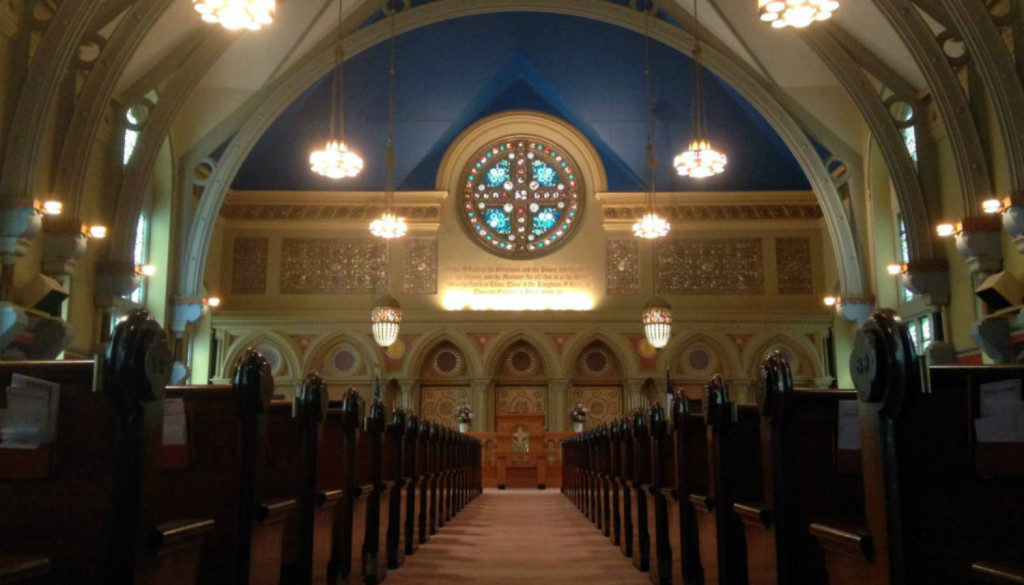
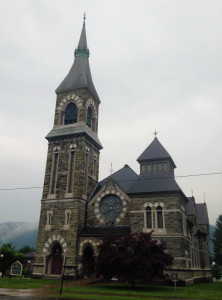

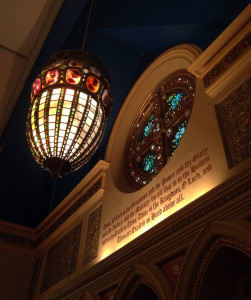


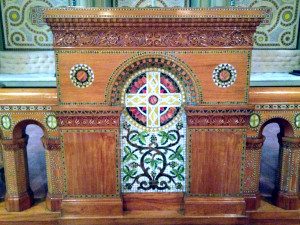
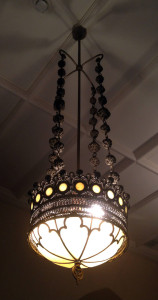
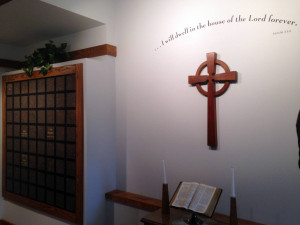
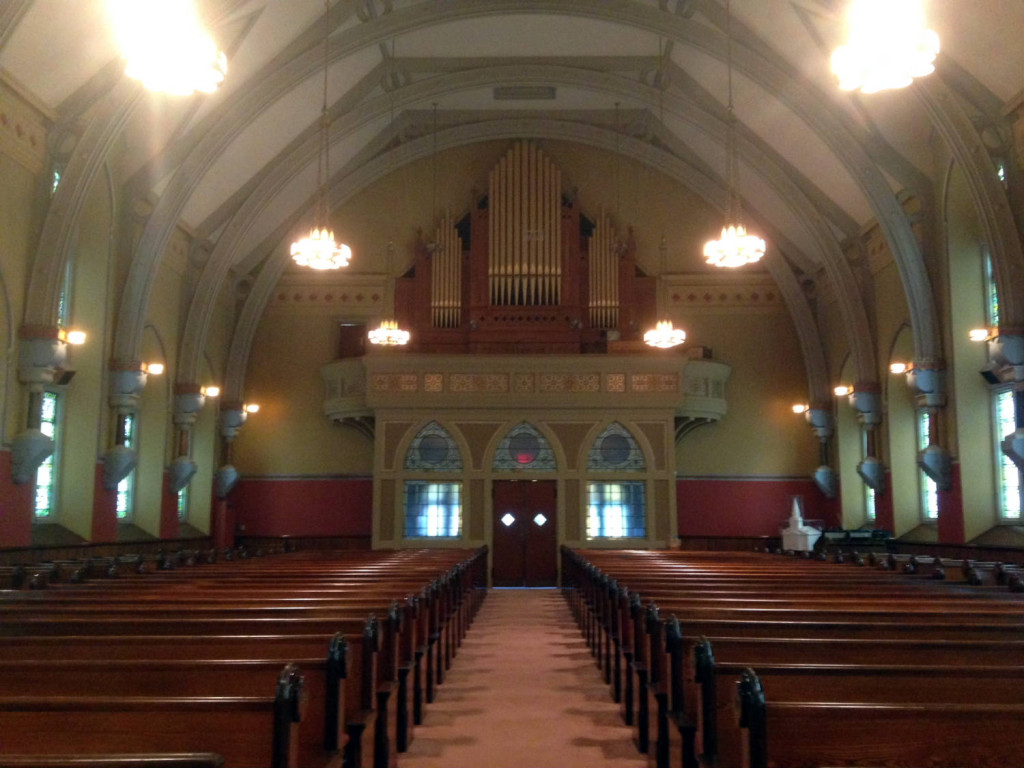


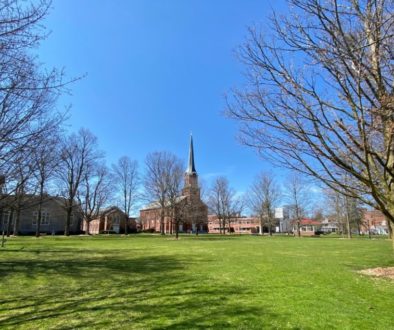

May 5, 2015 @ 7:29 pm
and here we are, back to our favorite topic! wonderful that this treasure exists. thank you.
Make a Stop in Bath, New York | Exploring Upstate
April 21, 2020 @ 3:44 pm
[…] Bath was a few years ago specifically to visit one of the state’s most underrated gems. The First Presbyterian Church of Bath has the honor of being one of the few remaining sanctuaries entirely designed by Louis Comfort […]
15 Religious Sites in NY | Exploring Upstate
July 12, 2020 @ 10:56 am
[…] The First Presbyterian Church of Bath features a sanctuary that is entirely designed floor to ceiling by the famed Louis Comfort Tiffany. […]
September 9, 2021 @ 8:10 pm
Could you show photos of the Tiffany stained glass windows individually?
September 9, 2021 @ 9:50 pm
Hi Nancy,
I’d recommend contacting the church directly for specific photos of the windows.
-c